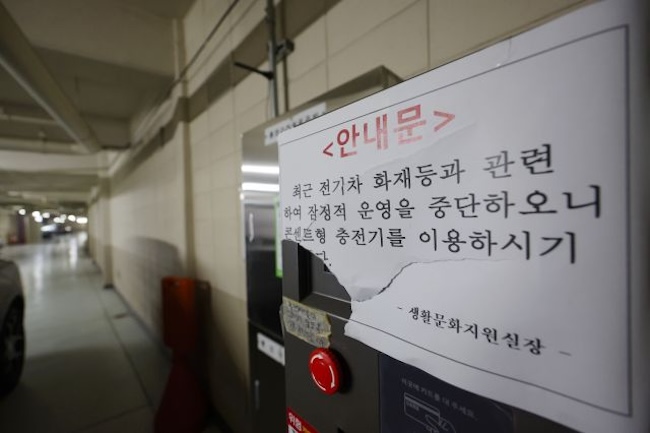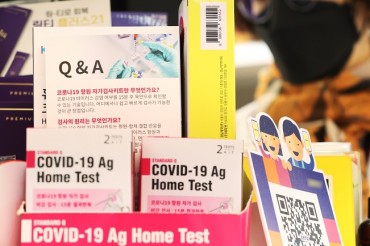
A recent electric vehicle fire in an underground parking garage has ignited fears among the public and drawn criticism of the government’s disjointed response to the incident. (Image courtesy of Yonhap)
SEOUL, Aug. 13 (Korea Bizwire) – A recent electric vehicle fire in an underground parking garage has ignited fears among the public and drawn criticism of the government’s disjointed response to the incident.
The fire, which occurred on August 1 in the Cheongna district of Incheon, has intensified what some are calling “electric vehicle phobia.” Critics argue that the government lacks a clear central authority to address the issue, instead relying on a patchwork of responses from various agencies.
As the exact cause of the fire and the factors that exacerbated its damage remain undetermined, several government departments have been responding independently. This “silo mentality” in administration, observers say, is only increasing public anxiety.
On August 12, the Ministry of Environment held a meeting on electric vehicle fire countermeasures with other relevant agencies, including the Ministry of Trade, Industry and Energy, the Ministry of Land, Infrastructure and Transport, the Ministry of the Interior and Safety, and the National Fire Agency.
This meeting followed a separate discussion held by the Ministry of Trade, Industry and Energy on August 8 with automaker representatives.
The Ministry of Land, Infrastructure and Transport had also planned to hold its own meeting on August 13 to discuss topics such as the public disclosure of electric vehicle battery manufacturers.
However, this meeting’s status became uncertain after a vice-ministerial level meeting of related departments was hastily scheduled for the same day.
This is not the first instance of an electric vehicle fire in an underground parking facility. The number of electric vehicle fires has been steadily increasing, from 24 cases in 2021 to 43 in 2022, and 72 last year.
In June, following a fire at a lithium battery factory in Hwaseong, the government formed a public-private joint task force, promising to inspect potential large-scale disaster risk factors.
Despite these efforts, the government’s response to successive battery fire incidents has been criticized as inconsistent. The regulatory oversight for battery-related issues is spread across multiple agencies.
The Chinese battery company Farasis, which has come under scrutiny in this incident, manufactures battery cells, which fall under the purview of the Ministry of Trade, Industry and Energy.
However, the Mercedes-Benz electric vehicle involved in the fire is regulated by the Ministry of Land, Infrastructure and Transport.
The Ministry of Environment, which led the recent fire countermeasure meeting, is primarily responsible for electric vehicle subsidies and charging station installations.
Large-scale social disasters like underground parking fires fall under the jurisdiction of the Ministry of the Interior and Safety.
The government has announced plans to unveil comprehensive measures related to electric vehicle fires early next month.
However, both the National Fire Agency and the Ministry of Land, Infrastructure and Transport have already created and distributed separate manuals for responding to electric vehicle fires.
In the absence of a centralized approach, individual agencies continue to propose their own measures.
The Ministry of Oceans and Fisheries announced on August 8 that it plans to establish guidelines in the latter half of the year to limit electric vehicle battery charge to 50% during ship transport.
On August 9, the Seoul Metropolitan Government stated it would regulate underground parking access to electric vehicles with battery charges of 90% or less.
These measures have drawn criticism from electric vehicle drivers, who view them as bureaucratic attempts to evade responsibility through charging restrictions rather than focusing on accident prevention.
Kevin Lee (kevinlee@koreabizwire.com)






